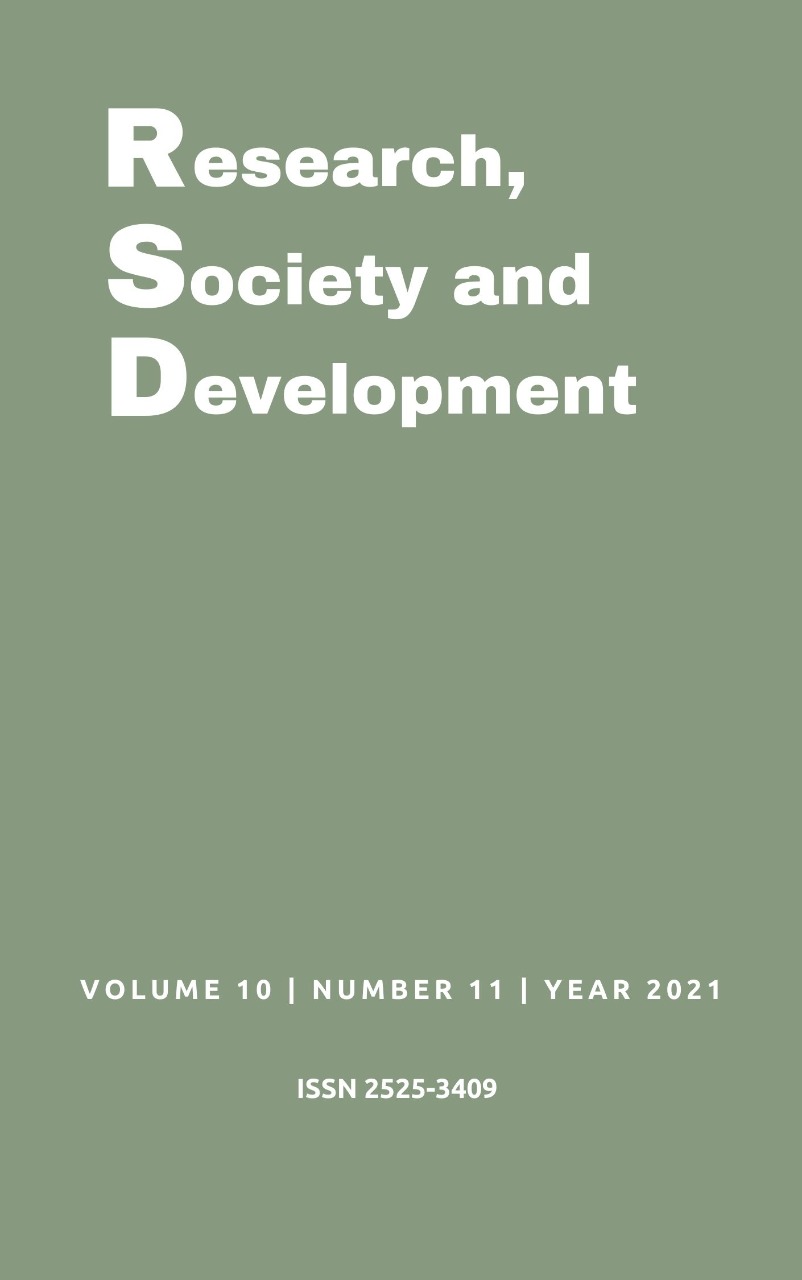El acto sensorial como objeto de la representación de un sentimiento
DOI:
https://doi.org/10.33448/rsd-v10i11.19581Palabras clave:
Asunto, Mente, Psicología descriptiva, Sensación, Sentimiento.Resumen
El estudio científico del acto sensorial tiene como objetivo hacer una distinción entre la relación de las sensaciones con la Serie de Sentimientos, permanentemente presentes en la conciencia, y la relación de las sensaciones con los grupos de Posibilidades Permanentes de la Sensación, que intervienen de manera intermitente en la conciencia. Sin embargo, partimos de la descripción de estos dos conceptos, propios de la psicología científica y atribuidos a la teoría psicológica de William Hamilton (1853, 1859, 1860), hasta considerar la mirada crítica de John Stuart Mill (1869). A partir de ahí, se buscó analizar nuestro objeto de estudio, que es el acto sensorial, y esto de acuerdo con este segundo fenómeno de relación con el fin de contribuir a los estudios científicos desde dos perspectivas, que son: a) comportamiento, porque según las relaciones causales de David Hume (1739), en cuanto a que la teoría de la causalidad es la base teórica inicial para sustentar el estudio de nuestro objeto, la conducta es el efecto de los actos sensoriales, que son la causa de la misma y hacen que la conducta suceda a través de las acciones del pensamiento. O actuando de otra manera; b) la memoria de fenómenos psíquicos inmediatamente pasados, porque según la descripción científica de la representación del sentimiento, que es la segunda base teórica de nuestro estudio enmarcado por Franz Brentano (2008), el sentimiento tiene un objeto. Los resultados serán producto de observaciones sobre los efectos del acto sensorial. Las conclusiones del estudio se referirán a la relevancia de las condiciones bajo las cuales estas posibilidades se realizan en la conciencia.
Referencias
Bacon, F. (1851). Oeuvres de BACON (Ed. rév.) (2e ed.) (F.-M. Riaux, Trad.). Charpentier.
Bergson, H. (1927). Ensaio sobre os dados imediatos da consciência. (J. Silva Gama da, Trad.). Edições 70.
Bergson, H. (1965). Matière et mémoire : Essai sur la relation du corps à l’esprit (72e ed.). Les Presses Universitaires de France.
Berkeley, G. (1920). Les principes de la connaissance humaine (C. Renouvier, Trad.). Librairie Armand Colin.
Brentano, F. (2008). Psychologie du point de vue empirique (M. Gandillac de, Trad.). VRIN.
Brentano, F. (2017). Psychologie descriptive (A. Dewalque, Trad.). Éditions Gallimard.
Garnier, A. (1865). Traité des facultés de l’âme : Comprenant l’histoire des principales théories psychologiques (2e ed., T. 1). Hachette.
Hamilton, W. (1860). Lectures on Logic. (Ed. rév.). Gould and Lincoln.
Hamilton, W. (1859). Lectures on Metaphysics. (Ed. rév.). Gould and Lincoln.
Hamilton, W. (1853). Philosophy of Sir William Hamilton, bart. (Ed. rév.). D. Appleton & company.
Hume, D. (2006). Enquête sur l’entendement humain. (A. Leroy, Trad.). Flammarion.
Hume, D. (1739). Traité de la nature humaine, Livre I : De l’entendement (P. Folliot, Trad.). ohn Noon.
James, W. (1909). Précis de psychologie (É. Baudin et G. Bertier, Trad.). Marcel Rivière.
James, W. (2018). Le pragmatisme (Éd.1911). Hachette Livre-BNF.
James, W. (1913). L’idée de vérité (L. Veil et M. David, Trad.). Librairie Félix Alcan.
Locke, J. (1735). Essai Philosophique concernant l’Entendement Humain (3e ed.) (Ed. rév.) (P. Coste, Trad.). chez Pierre Mortier.
Stuart Mill, J. (1866). Système de logique déductive et inductive. Livre VI : De la logique des sciences morales (6e ed.) (L. Peisse, Trad.). Librairie philosophique de Ladrange.
Stuart Mill, J. (1869). La philosophie de Hamilton (3e ed.) (É. Cazelles, Trad.). Germer Baillière.
Wundt, W. (1886). Éléments de psychologie physiologique, Tome premier (2e ed., Vol. 1) (É. Rouvier, Trad.). Librairie Félix Alcan.
Wundt, W. (1872). Nouveaux éléments de physiologie humaine. F. Savy, Libraire-Éditeur.
Descargas
Publicado
Número
Sección
Licencia
Derechos de autor 2021 Rudy Kohwer; Edvania Gomes da Silva

Esta obra está bajo una licencia internacional Creative Commons Atribución 4.0.
Los autores que publican en esta revista concuerdan con los siguientes términos:
1) Los autores mantienen los derechos de autor y conceden a la revista el derecho de primera publicación, con el trabajo simultáneamente licenciado bajo la Licencia Creative Commons Attribution que permite el compartir el trabajo con reconocimiento de la autoría y publicación inicial en esta revista.
2) Los autores tienen autorización para asumir contratos adicionales por separado, para distribución no exclusiva de la versión del trabajo publicada en esta revista (por ejemplo, publicar en repositorio institucional o como capítulo de libro), con reconocimiento de autoría y publicación inicial en esta revista.
3) Los autores tienen permiso y son estimulados a publicar y distribuir su trabajo en línea (por ejemplo, en repositorios institucionales o en su página personal) a cualquier punto antes o durante el proceso editorial, ya que esto puede generar cambios productivos, así como aumentar el impacto y la cita del trabajo publicado.


